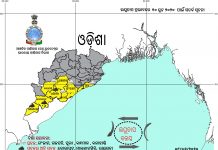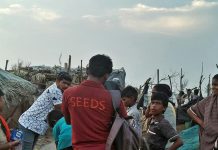New Delhi : Despite some significant region-specific differences, generic factors, such as, government support in rice production, favorable monsoons, rising number of rice processing companies and increasing exports have positively impacted the Indian rice industry reports Infomerics Valuation and Rating Pvt Ltd, the noted SEBI-registered and RBI-accredited financial services credit rating company. It underlines the need of immediate attention to the industry risks – container shortage, scanty rainfall and low MSP coverage.
The report Rice Industry – Emerging Contours released today is optimistic about the future of the rice industry in India. It highlights the need of a comprehensive rice strategy, with focus on new systems, technologies and new rice seed varieties. It lists the government initiatives on bringing about structural changes in the sector and the efficient ways to reduce the extent of dependence on the vagaries of the monsoon.
Key highlights include:
Positive outlook of the industry –
- India is the world’s second largest producer of rice after China with production of roughly 120 million tonnes
- In both kharif and rabi seasons, rice production has been seeing an increasing trend over the years. The total production rose by almost 15 per cent from FY 14 to FY 21
- Rice (including basmati and non-basmati) occupy a major share (more than four-fifth) in India’s total cereals export
- The quality of Indian Basmati is world renowned, and India exports its basmati to the world. It is interesting to see that almost two-third of the basmati export is accounted for by five nations – Saudi Arabia, Iran, Iraq, Yemen Republic and UAE
Government initiatives –
- Increasing Cultivation Area – Telangana, Tamil Nadu, and Andhra Pradesh constitute over 80 per cent of the total area under paddy cultivation, which rose from 30 lakh hectares in FY 20 to 35 lakh hectares in FY 21.
- Rice Fortification – The government is fortifying rice distributed under government schemes, viz., Public Distribution System (PDS) and Mid-Day-Meal scheme by 2024. The government distributes over 300 lakh tonnes of rice under the National Food Security Act, 2013. The Centre allocated 328 lakh tonnes of rice for Targeted Public Distribution System (TPDS), Mid-Day-Meal (MDM) and Integrated Child Development Scheme (ICDS) under National Food Security Act (NFSA) in FY 22.
- Increased Rice Procurement – Total rice procurement rose by 14 per cent from marketing year 2019-20 (50.58 million metric tonnes) to marketing year 2020-21 (57.82 million metric tonnes).
- Increasing Minimum Support Price (MSP) – The MSP almost doubled in the last decade. Recently, the government announced the MSP at ₹1940 per quintal for ‘common paddy’ and ₹1960 for ‘Grade-A paddy’ for the marketing year 2021-22.
Industry Risk –
Rice production is beset with a variety of risks. High fertilizer price, plummeting water table, soaring agricultural input prices and asymmetric market price information constitute risk factors. Other issues include high rent charges of agricultural machinery, poor transportation, poor consultancy facilities and adequacy, timeliness and cost of credit.
Diverse setting significantly impacts seasonal concentration, spatial spread, and loss of about 10 per cent of paddy/rice in processing, storage and transport. Heterogeneity of rice milling mills in terms of kind, capacity location, services and ownership make the application of any standard investment, cost and return template difficult.
Some specific industry risks relate to the following three aspects:
- Container Shortage – About 25,000-30,000 containers are lying at ports because of disputes with Customs, etc. Basmati rice exports have been hit hard because 80 per cent is routed through containers.
- Scanty Rains – Erratic rainfall could affect crop production. Farmers have planted hectares of land with rice this year with fears of scarce rainfall[1] although the Indian Meteorological Department has forecast the country will receive normal monsoon rains in 2021.
- Low MSP Coverage – Insufficient MSP realization is reflected in paddy households selling their produce to the APMC reducing from 17 per cent (2013) to 2.7 per cent (2019) because of poor participation of private traders, low infrastructure, unawareness, etc.
Way Forward –
Paddy/rice production in India cannot be considered in silo; it is inextricably linked to the broader question of land rights and land ownership, food security, political stability, preservation of natural ecosystems and agricultural diversification. Stringent international food quality and safety standards of E.U., U.S., and Japan can help to enhance the quantity and quality of organic production.
Since the Indian agriculture continues to be a gamble in monsoon, risk mitigation measures, crop insurance, price stabilization measures, stress on geographical indicators (GI) of basmati rice in India and optimum use of agro-climatic conditions can reduce the dependence on the monsoon.




















